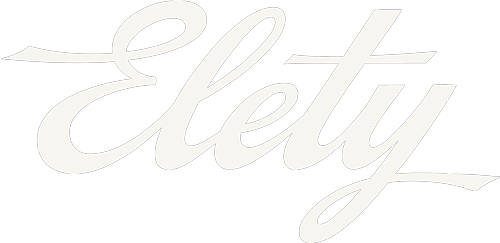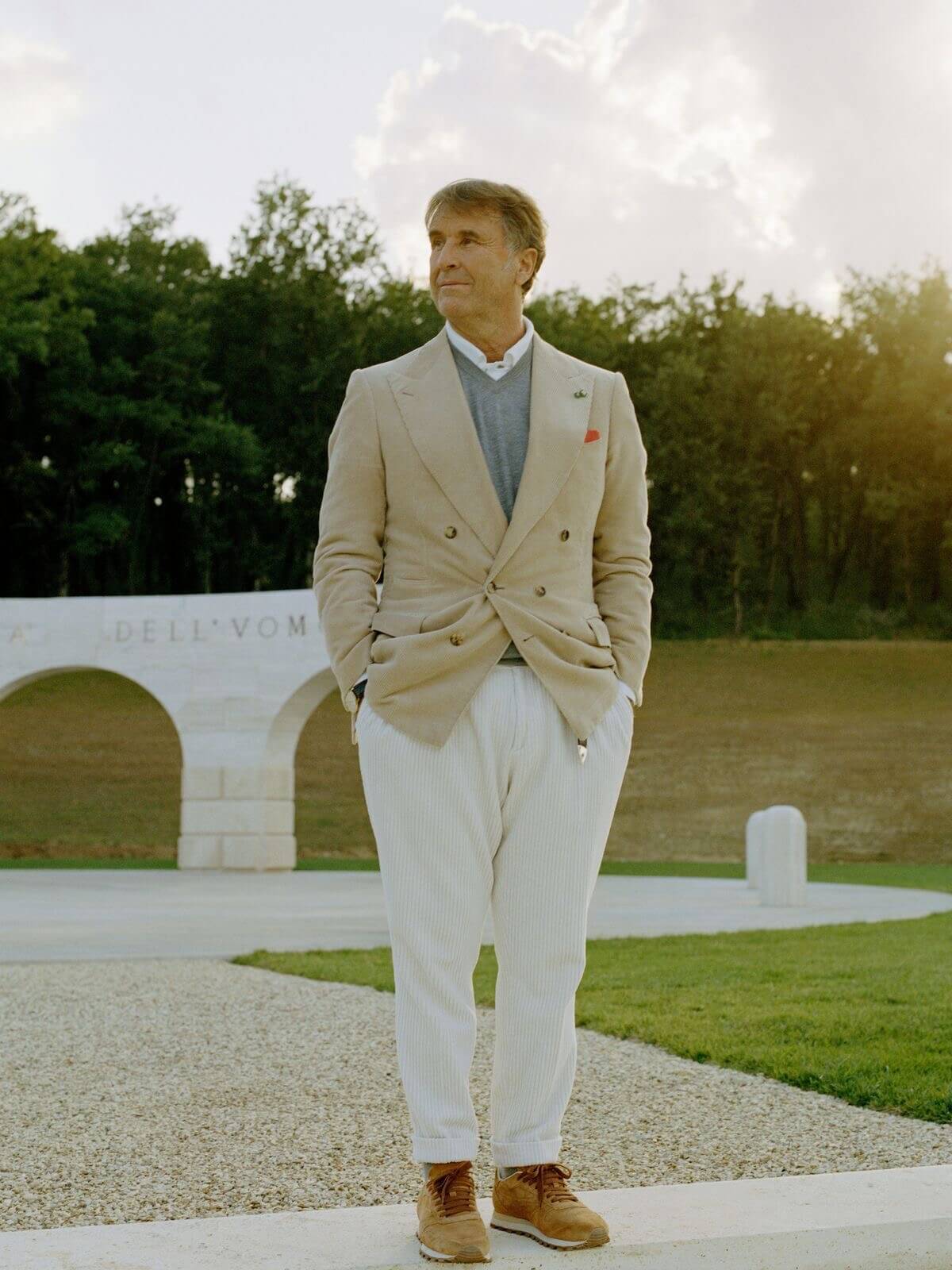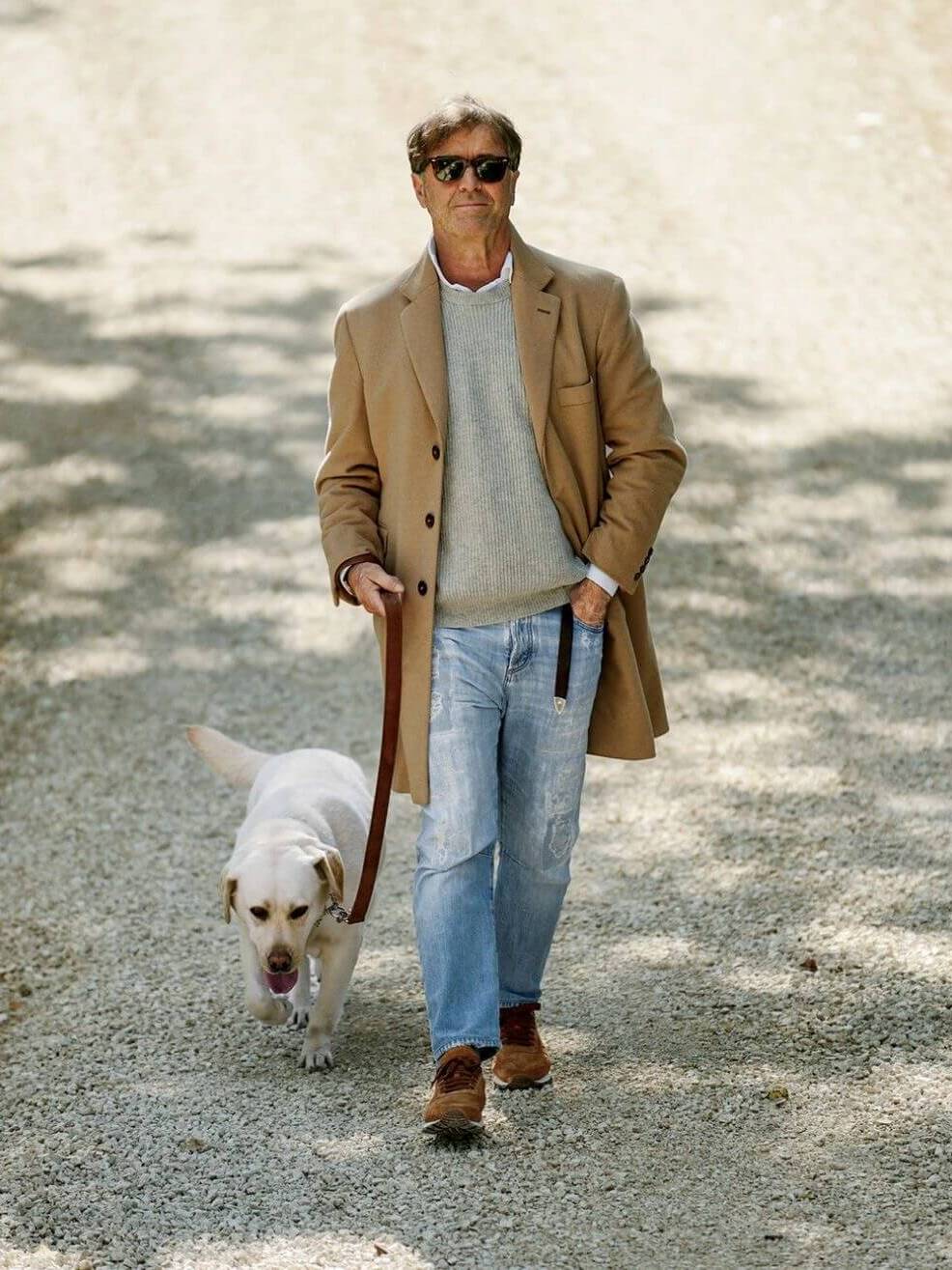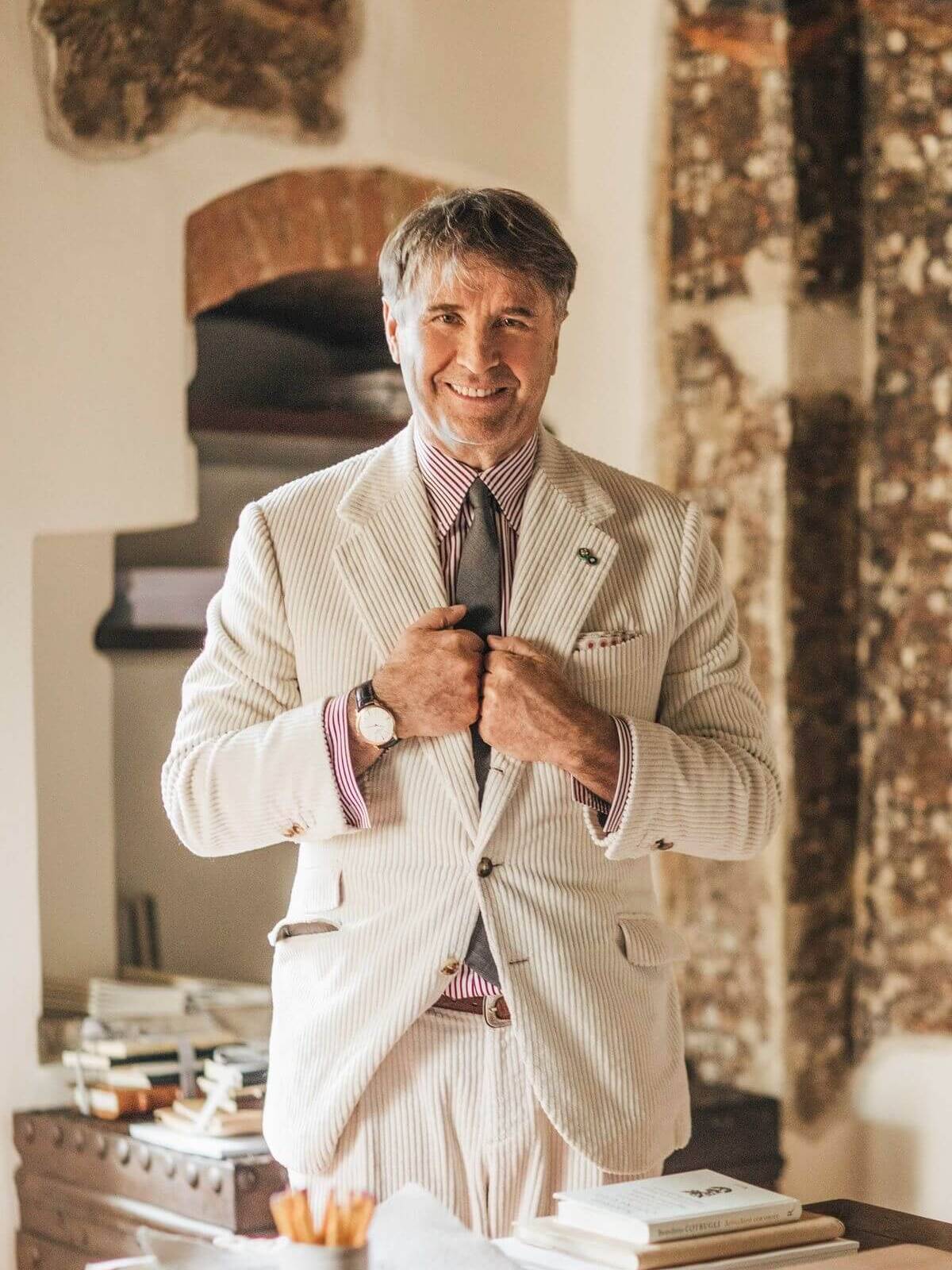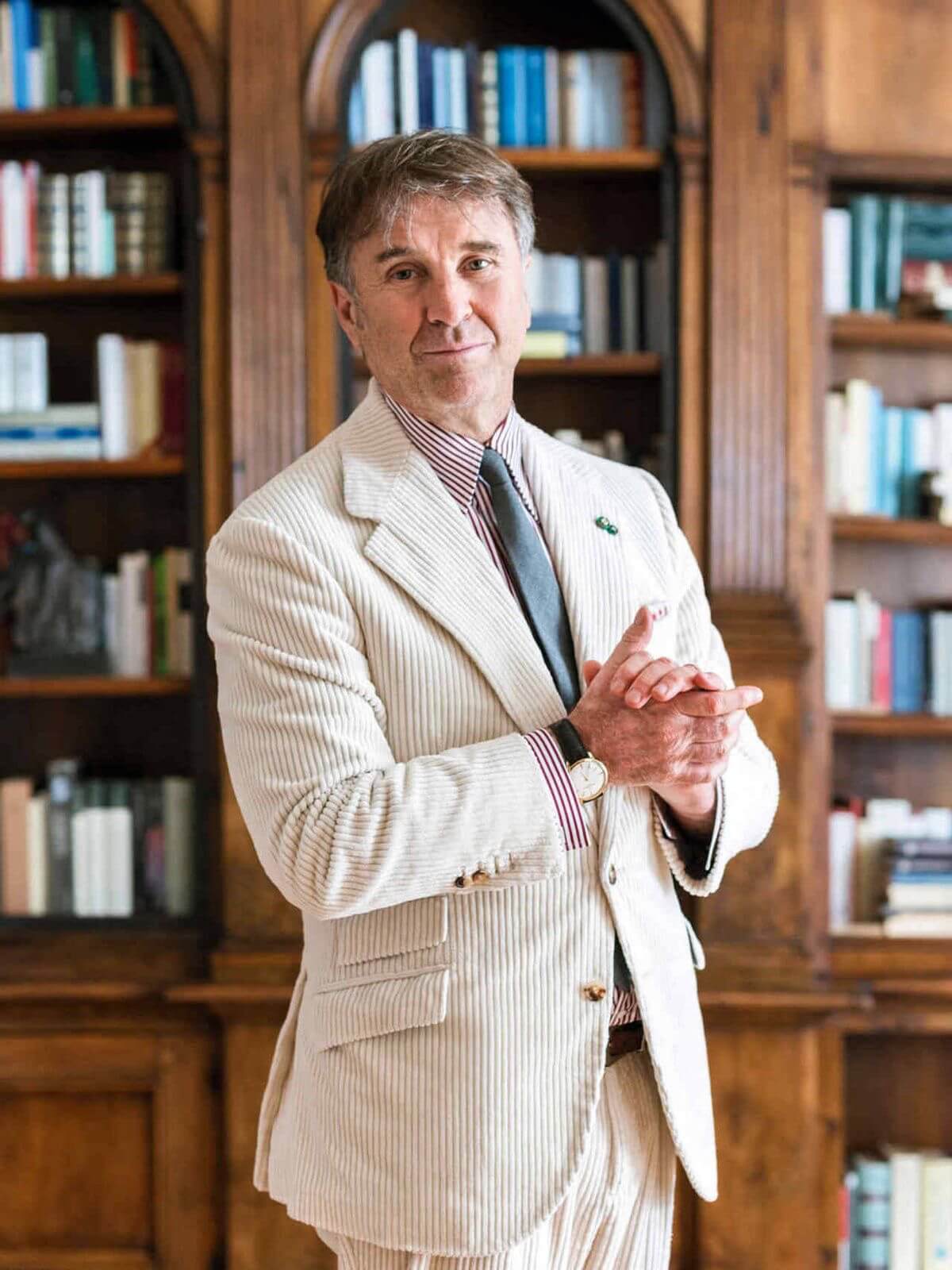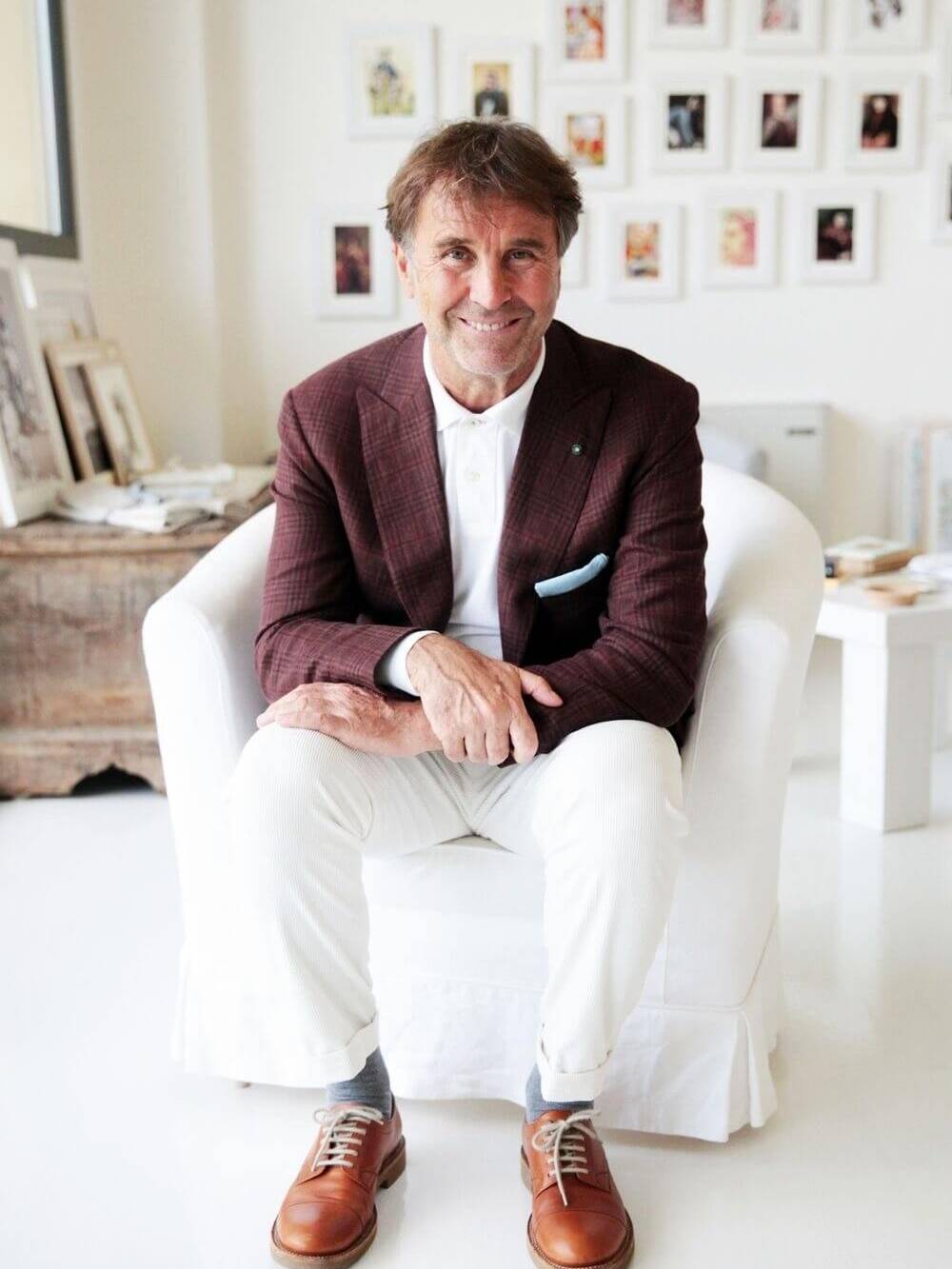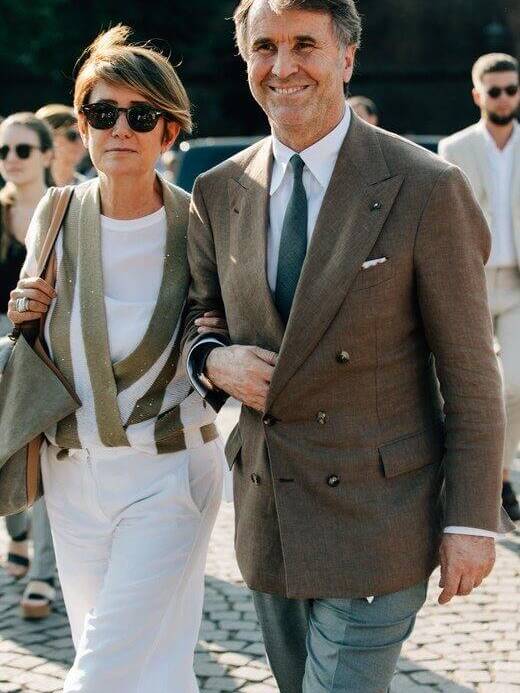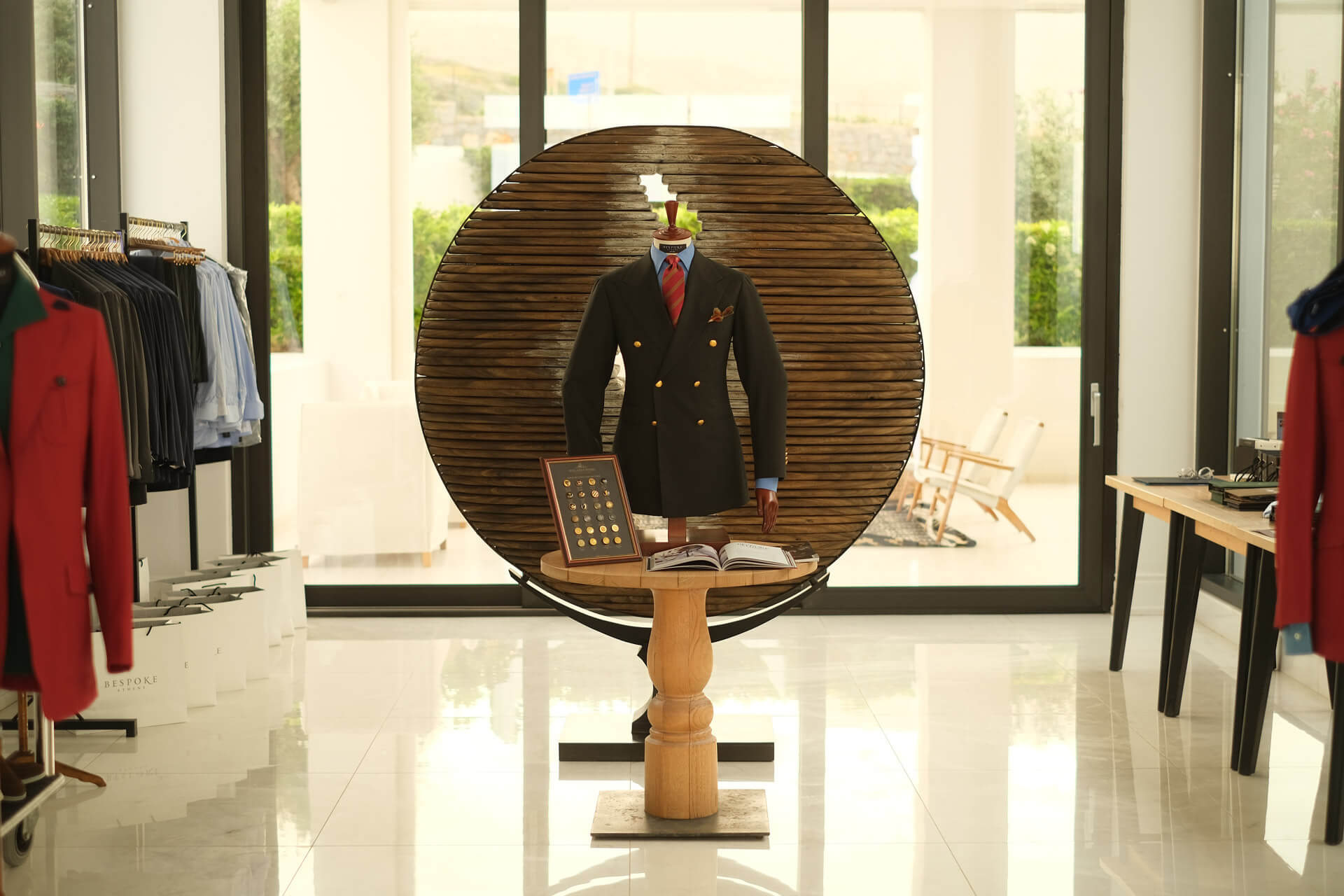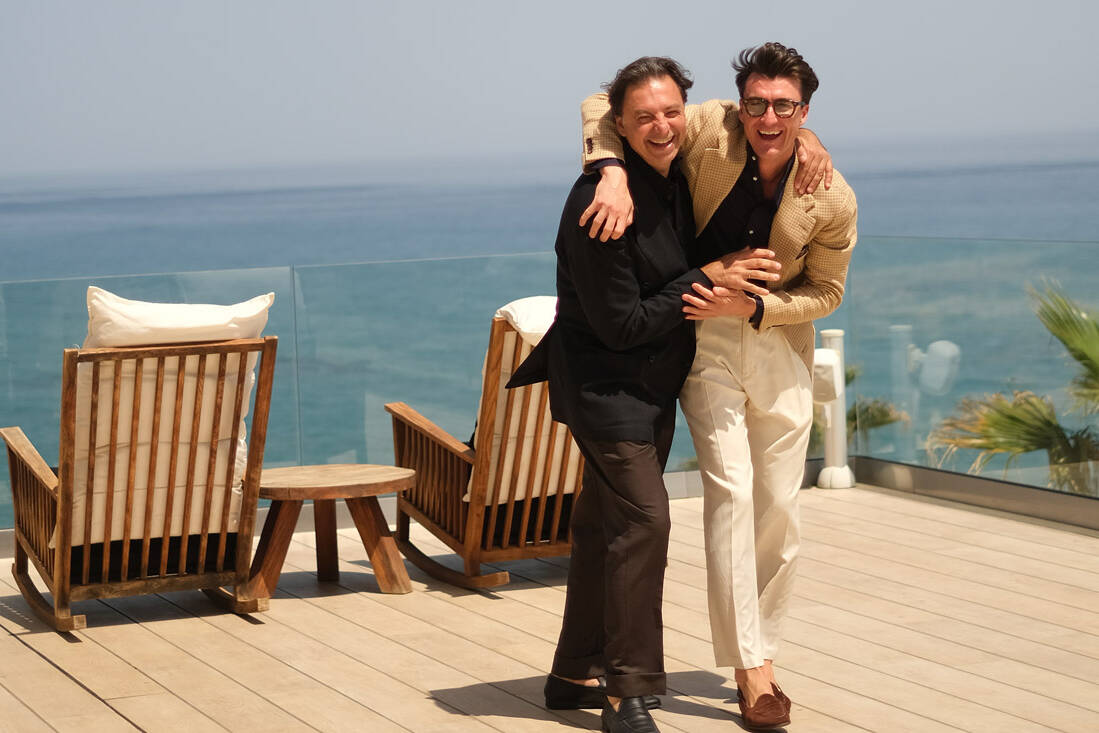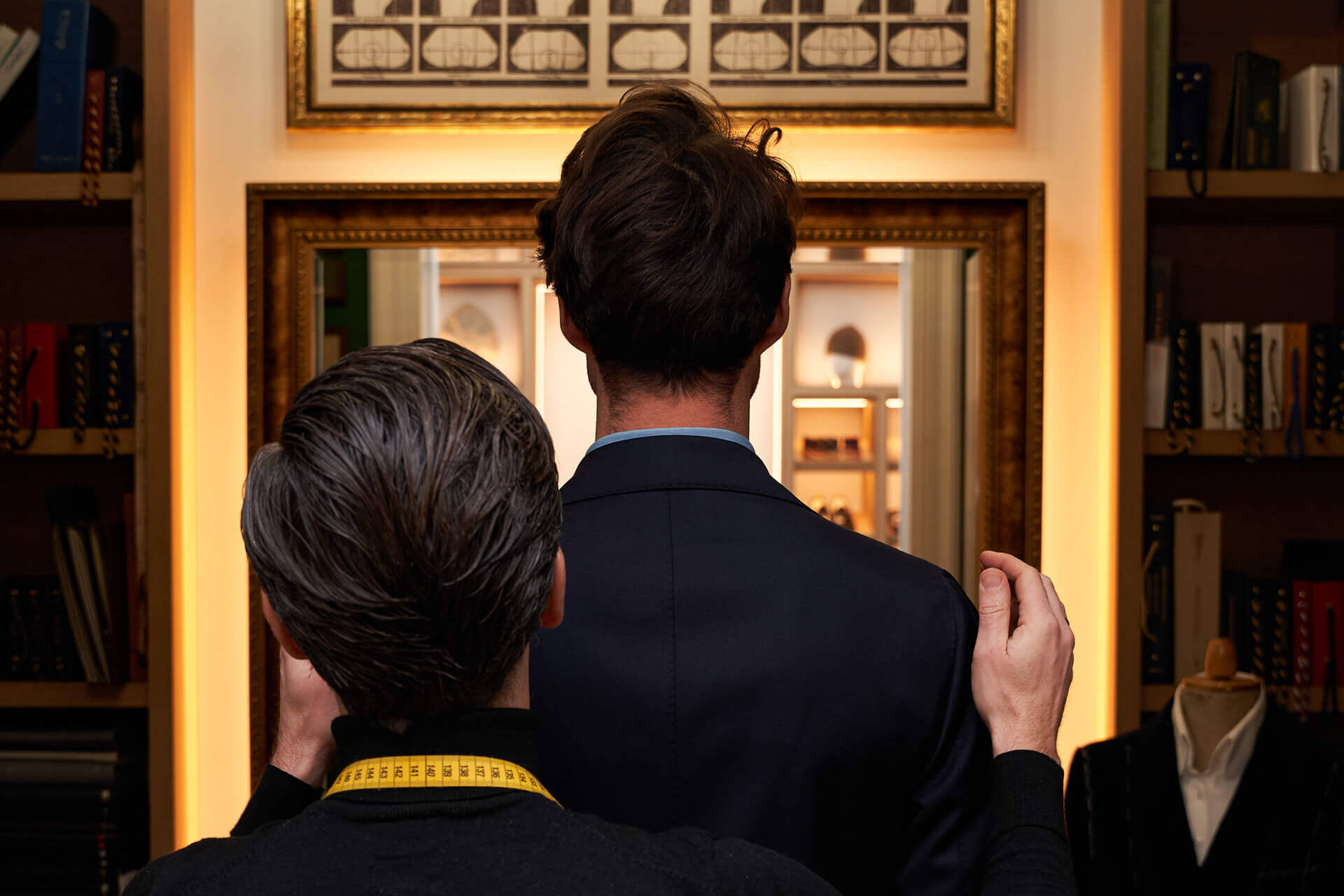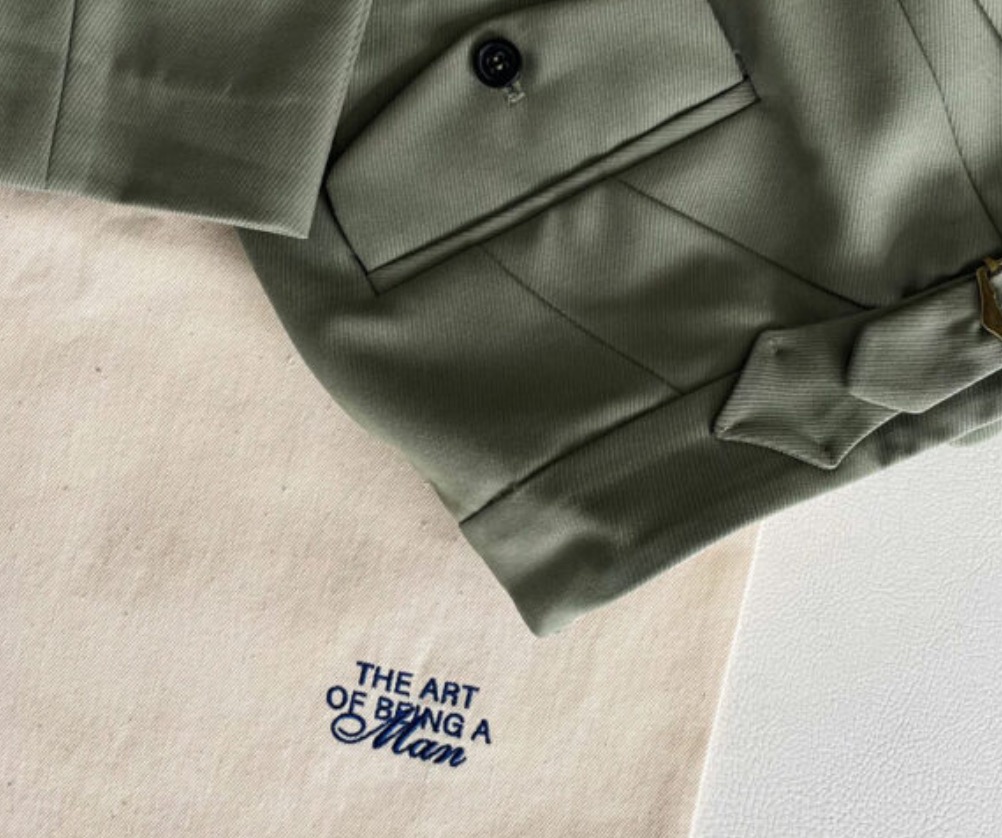A gentleman, recognized by how he wears his jacket, holds his hands in his pockets, keeps his legs together, and with a genuine smile.
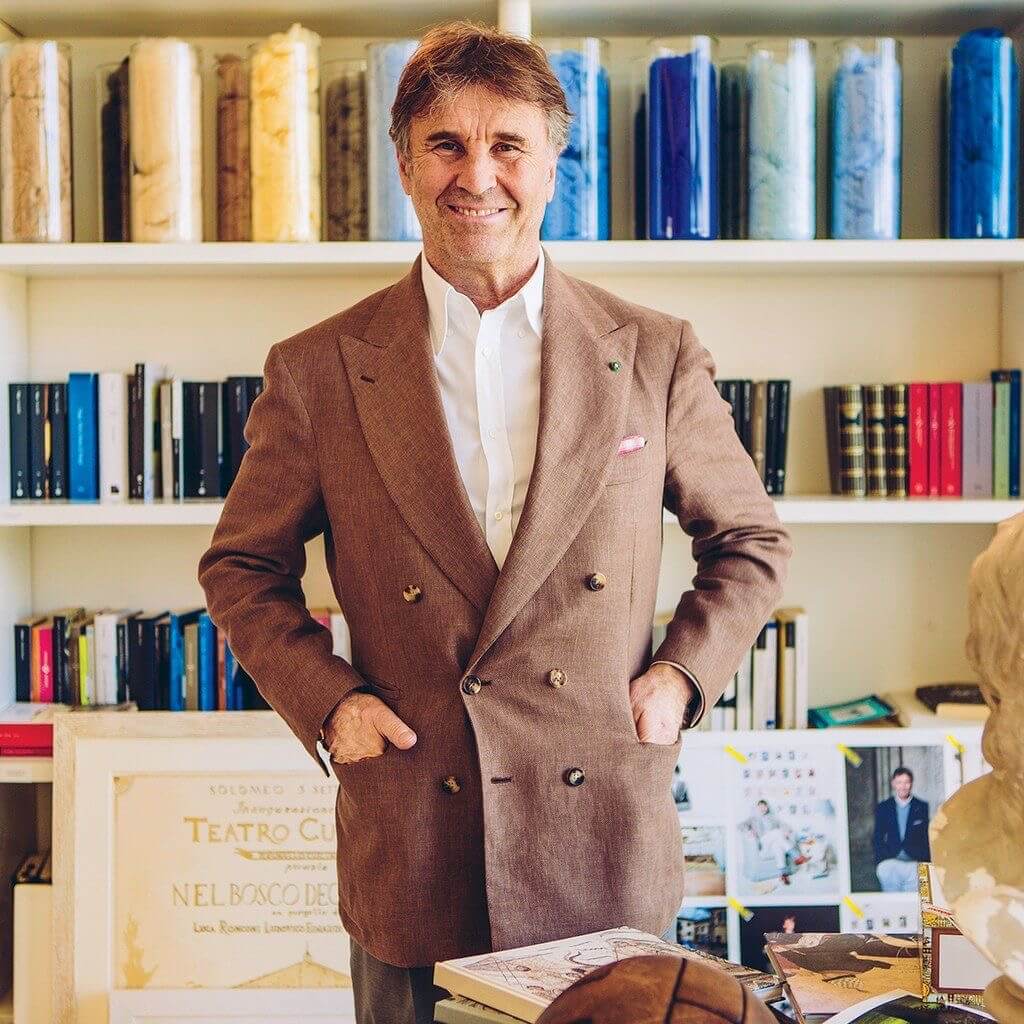
A Humble Childhood And The Journey To Cashmere
Brunello Cucinelli was born in 1953 in Italy, in the small village of Castel Rigone. His father was a peasant, and his mother sewed at home. The family lived in poverty. The boy had to combine school with work on his father’s farm to help the family.
From a young age, Brunello saw how hard his father worked on the farm. When he was 15, his father had to take a job at a cement plant. Later, Cucinelli explained that his attitude towards work was formed in childhood. He remembered that coming home, his father often asked himself: “What have I done wrong in the eyes of God?”
“I promised myself that I would do everything possible to ensure that no one is humiliated at work,” he said. Although at that time he didn’t know what he would do.
The Birth of a Cashmere Vision
In the early 1970s, after finishing school, Cucinelli enrolled at the University of Perugia in the engineering faculty, but dropped out after two years. He studied philosophy on his own and was interested in fashion. At the age of 25, he began producing cashmere and dyeing it. He chose this material because of its quality and durability: cashmere is expensive, so it is rarely thrown away and people try to keep it as long as possible. The material has always been expensive, affordable only to high-ranking officials or aristocrats. “Business” sweaters were made from it, usually black, gray, or beige. Cucinelli wanted to focus on color, dyeing cashmere in bright shades so that young women could wear it.
The designer was inspired by the colorful sweaters from the Benetton brand: he decided that there would be a place in the market for similar clothing, but made from cashmere fabric. Cucinelli wasn’t afraid to stand out: in an interview with The New York Times, the designer revealed that he dyed his hair orange when he worked as a model in a hair salon as a teenager.
Establishing The Brand: Early Challenges and Milestones
In 1977, he took out a loan of 500 thousand lire (around $500) and opened his own shop, covering an area of 40 square meters. There, he specialized in dyeing cashmere and also decided to release a few finished sweaters.
Cucinelli started by sourcing material for his initial products. He ordered 20 kg of cashmere from a local yarn merchant, but warned in advance that he wouldn’t be able to pay immediately. The merchant agreed to wait for payment.
In 1978, the designer bought a small cashmere production factory in the town of Solomeo. He named the enterprise Smail (Societa Manufatti in Lana — Wool Products Company). In a year of operation, he received 53 orders for sweater production.
In 1981, Brunello Cucinelli married Federica Benda, whom he had known since school. After the birth of their two daughters, Camilla and Carolina, the family moved to Federica’s hometown — Solomeo.
In 1985, the entrepreneur bought a 14th-century abandoned castle. The owner agreed to sell it and provide a payment extension because he personally knew Federica’s parents and trusted them. In the same year, the company was renamed, bearing the name of its owner — Brunello Cucinelli.
Expanding Horizons: The Growth of Brunello Cucinelli
In 1987, the designer relocated his factory to Solomeo and opened the main office in the renovated castle. At the same time, the company started receiving orders from Germany and the USA. The brand exclusively produced women’s cashmere sweaters until 1994, when the men’s line — also made of cashmere — was first introduced.
In 1994, the first Brunello Cucinelli mono-brand store opened in Porto Cervo. By 1998–1999, the company was selling around 200 thousand sweaters annually.
Despite being born elsewhere, the designer took Solomeo under his patronage, calling it the homeland of his soul. Even before achieving success, Cucinelli decided to become the guardian of this town.
Solomeo: The Heart of the Cucinelli Empire
Since moving, Cucinelli has been transforming Solomeo, restoring old buildings and building roads. As of 2015, the town had about 500 residents. According to data from 2011, half of the inhabitants were employees of Cucinelli’s company. The entrepreneur buys land around the town in the former industrial zone between Solomeo and Perugia, planting orchards and olive groves.
In the vicinity of Solomeo, wheat has traditionally been grown, and wine and olive oil have been produced, industries revitalized with the help of the entrepreneur. After restoring the 14th-century castle tower, the designer began building a crafts school nearby. Students learn knitting, tailoring, sewing, knitwear repair, construction, and gardening in the agricultural department.
To enroll in the school, students must pass a competition — 2000 applicants for 15 places in each direction. Education at the school is free, and each student receives a scholarship of €700 ($891).
Cucinelli built a 200-seat theater in Solomeo, created the “Philosophical Garden” park with sculptures of famous thinkers, and also built a football stadium where he still plays with childhood friends.
Work Culture at Brunello Cucinelli
The workday for any employee starts at 8 am regardless of their position or department. Work at the production stops at 5:30 pm, and all employees go home. The lunch break lasts an hour and a half, and the meal costs €3 and consists of locally sourced products. Three women prepare the food: they are not professional chefs, so the dishes are simple and homemade.
The most important thing, according to Cucinelli, is to work in accordance with the natural rhythms of human life. At his factory, employees are not asked to work overtime. Business correspondence and discussion of work issues during free time and weekends are prohibited. Cucinelli believes that it’s important not to steal employees’ personal life and time, which could be spent on spiritual development or spending time with family.
Brunello Cucinelli's Five Style Rules:
1. Don’t be afraid to mix clothing from different styles.
2. Learn from the young.
3. Being in shape is the most important thing.
4. Find out what your color palette is.
5. Choose a sports jacket with the right pockets.
My opinion:
At the summer Pitti Uomo in 2021, I was lucky to meet personally Mr. Brunello. It was something special. He emitted very pleasant energy. I really like a lot the color palette of the brand, its philosophy, and the way it transmits its family values. I also have a perfume with which I stumbled upon, and I really like it for everyday wearing.
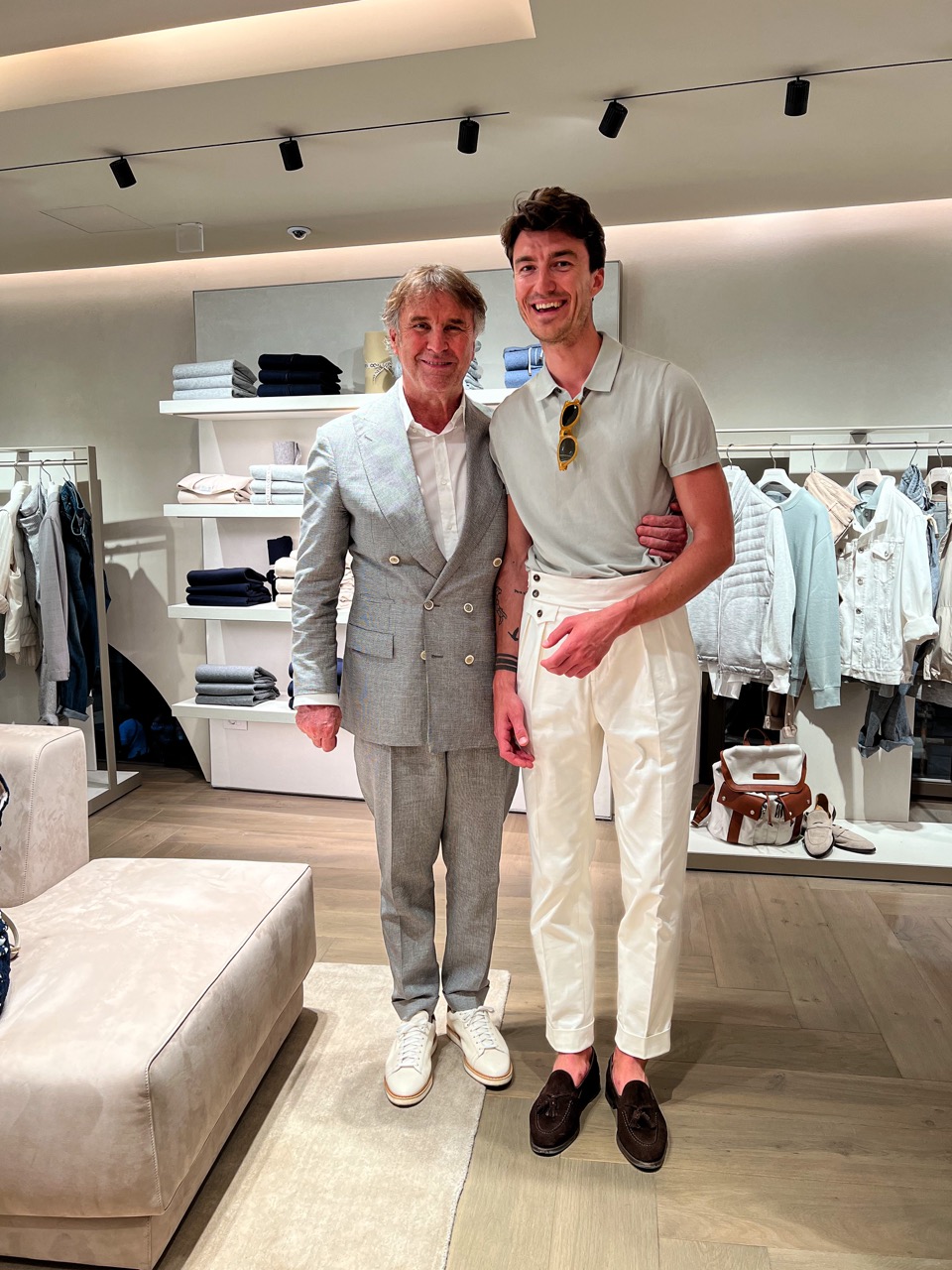
Fact in the Spotlight
An interesting fact about cashmere: this unique material is derived from the undercoat of cashmere goats. It gets its name from the region of Kashmir in India, where fabrics made from this wool were first produced. Cashmere possesses incredible softness, warmth, and durability, making it one of the most precious and expensive materials in the fashion world.
Quote of the Week
From the very beginning, I had a dream to live and work in the name of human dignity. I have always believed that no profit is possible without proper regard for dignity. We are capable of doing something such that at the forefront of all our activities, our entire company, stands the person.
Brunello Cucinelli
That’s all for today. See you on Saturday next week!
Yours sincerely, Anton Masko
